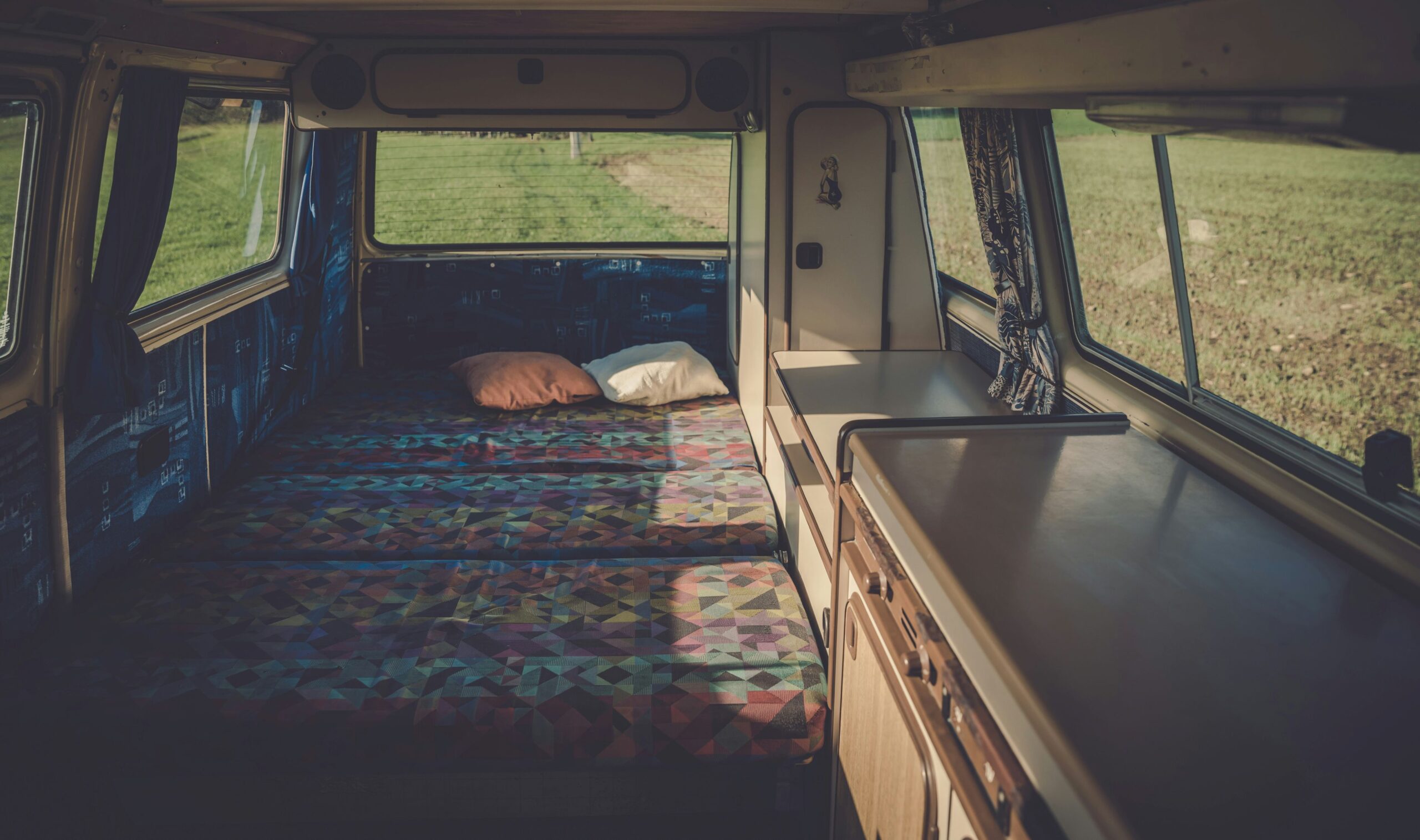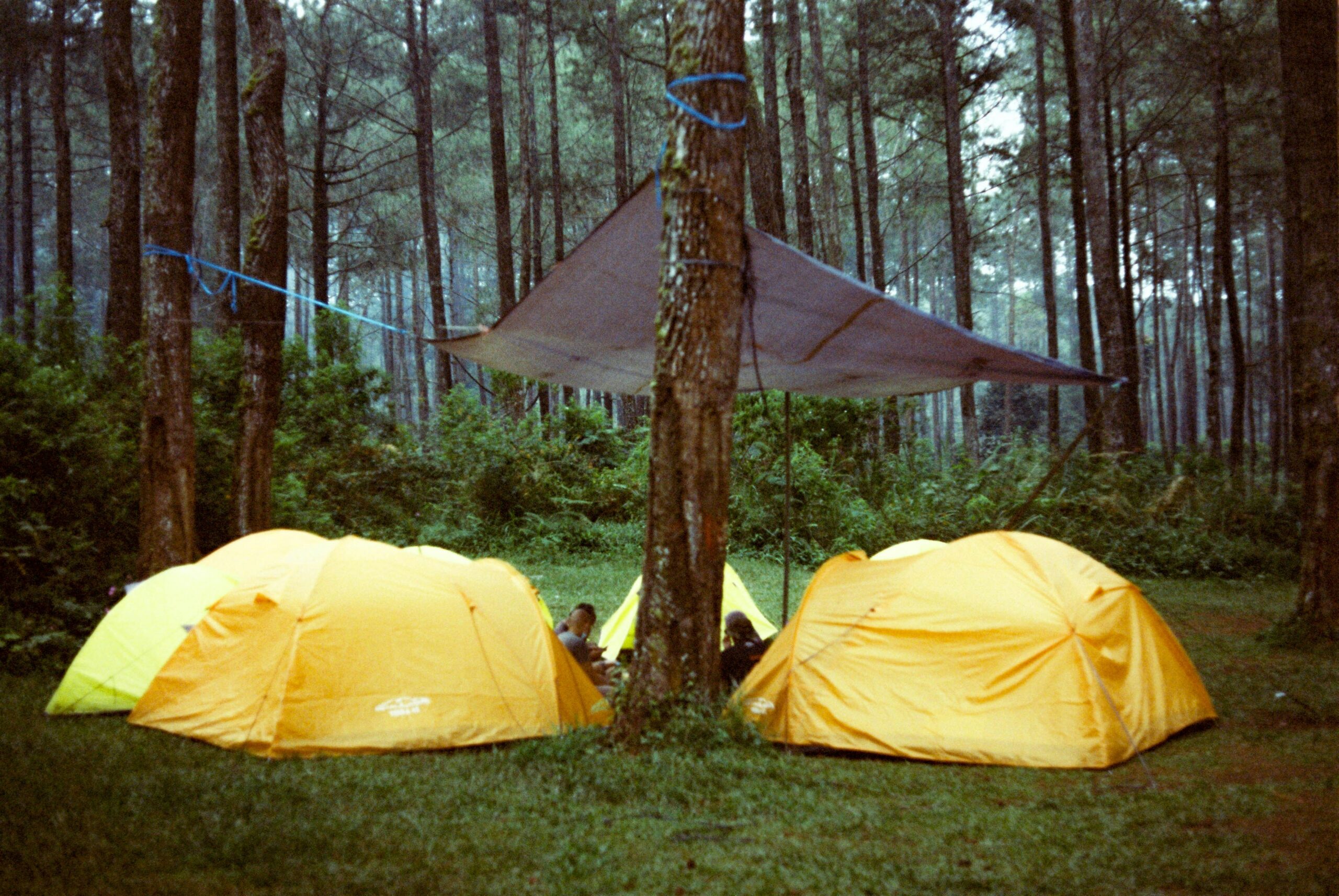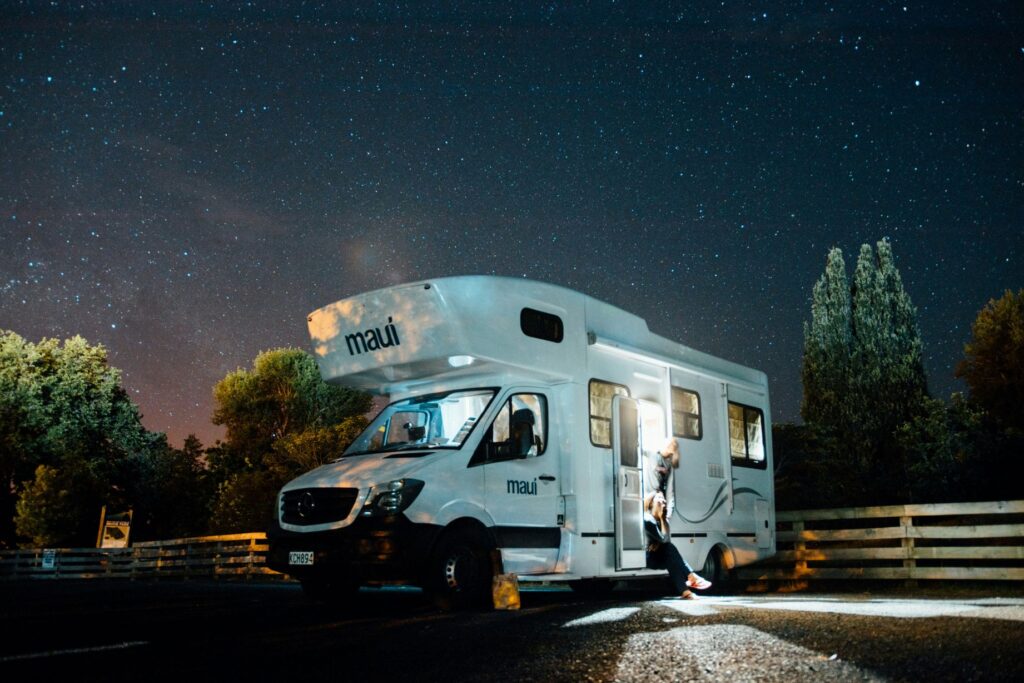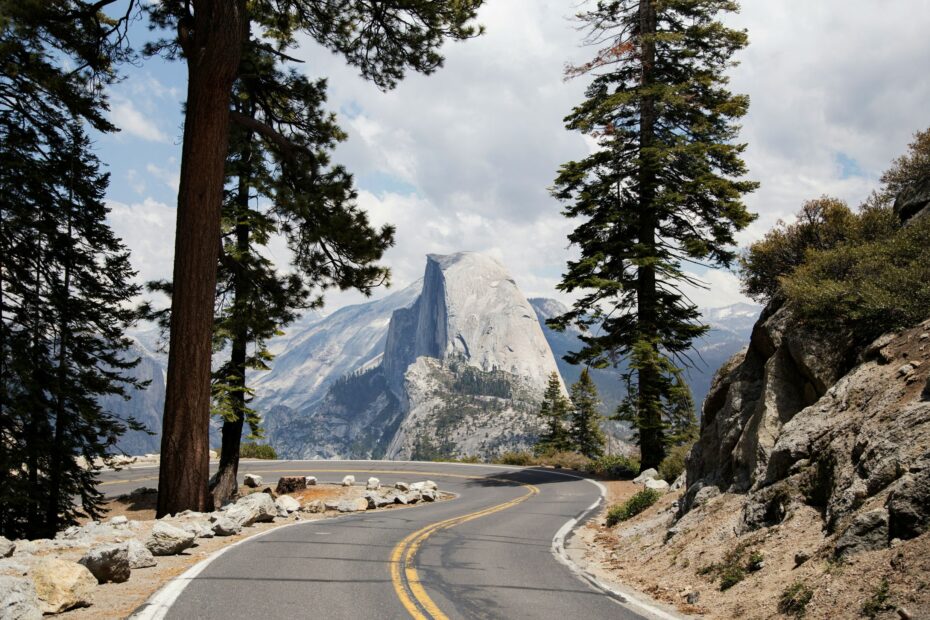Embark on a journey with us as we explore the RV lifestyle and what to expect on the road. Living in an RV full-time offers a unique and adventurous way of life, allowing you the freedom to travel, explore new destinations, and create unforgettable memories. But before you hit the road, several aspects must be considered to ensure a smooth and enjoyable RV experience.
RV Lifestyle: What to Expect on the Road – Key Takeaways
- RV living offers the opportunity to travel, see new places, and embrace a minimalist lifestyle.
- Consider your budget and determine whether you want to travel extensively or focus on saving money.
- Research the costs associated with RV living, including RV purchase or rental, campground fees, and maintenance expenses.
- Find RV-friendly destinations and campgrounds that offer amenities and beautiful surroundings.
- Living full-time in an RV is entirely possible, with a growing community of people embracing the freedom and adventure it offers.
- Choose the right RV that suits your travel preferences, whether you plan to stay in one place or travel extensively.
- Understand the costs involved in buying an RV and the ongoing expenses such as loan payments, maintenance, and living/travel costs.
- Explore options for handling mail and receiving packages in an RV, such as mail forwarding services or alternative solutions.
- Consider the cost-effectiveness of RV living compared to traditional housing and the potential savings it can offer.
- Learn tips and considerations for RV driving and traveling, including RV size considerations, route planning, and managing onboard facilities.
Embarking on the RV lifestyle is an exciting and rewarding adventure. Whether you’re a seasoned RVer or considering making the leap into full-time RVing, our comprehensive guide will provide you with the information you need to make the most of your RV journey. From choosing the right RV to understanding the costs and planning your travels, we’ve got you covered.
How Much Does It Cost To Live In an RV?
RV living can be attractive for those seeking a nomadic or minimalist lifestyle, but understanding the financial aspects is crucial. How much it costs is also going to depend on your goals. Are you moving into an RV to travel and adventure or to save money?
If you want to travel, adventure, get out, see, and do a lot, it can cost you $ 5,000 – $10,000 a month. If you are good at boondocking, doing free things, and traveling & living at a slower pace, it can cost way less, anywhere from $ 2,000 – $ 5,000.
In the end, no one can determine these costs for you. Instead, you need to look at your current bills, spending habits, and how you want to live and travel in the RV and work out your total. You will also want to look at the expenses involved to get started, such as purchasing or renting an RV, campground fees, maintenance costs, etc. Plus, you may want to consider potential budgeting tips such as slow travel, a cheaper RV, and campground memberships.

Featured Membership: Harvest Hosts
We love our Harvest Hosts membership! You get unlimited access to farms, breweries, wineries, and attractions across North America. With a membership, you can stay overnight at these businesses and in return, you are just asked to support the business by doing a tour, buying a bottle of wine, etc. Click here to learn more.
Featured Retailer: etrailer.com
For almost anything you would need or want for your RV, whether it’s a motorhome, 5th wheel, or travel trailer, etrailer.com has it! Click here to explore etrailer!
RV-Friendly Destinations and Campgrounds
Exploring new places is a significant part of RV living, and we have some recommendations for RV-friendly destinations and campgrounds. Whether you’re looking for scenic RV trips or top campgrounds with amenities, there are plenty of options. Here are some of our favorites:
1. Glacier National Park, Montana
Glacier National Park is a must-visit destination for RV enthusiasts. With stunning mountain views, serene lakes, and abundant wildlife, it offers a truly unforgettable experience. Several campgrounds within the park can accommodate RVs of various sizes, including Apgar Campground and St. Mary Campground. Plan your visit in advance, as campsites fill up quickly during peak seasons.
2. Yellowstone National Park, Wyoming
Yellowstone National Park is another iconic destination for RV travelers. Known for its geothermal wonders, including the famous Old Faithful geyser, as well as its diverse wildlife and breathtaking landscapes, Yellowstone offers endless exploration opportunities. RV camping is available at several campgrounds throughout the park, such as Fishing Bridge RV Park and Madison Campground.
3. Moab, Utah
If you’re seeking outdoor adventure and breathtaking scenery, Moab in Utah is the place to be. Stunning red rock formations surround this desert town, and is a gateway to two spectacular national parks: Arches National Park and Canyonlands National Park. Several RV campgrounds in the area, such as Moab Valley RV Resort & Campground and Portal RV Resort, offer convenient access to outdoor activities like hiking, mountain biking, and rock climbing.
- Glacier National Park, Montana
- Yellowstone National Park, Wyoming
- Moab, Utah

These are just a few examples of RV-friendly destinations and campgrounds to consider for your next adventure. Remember to research and plan ahead, especially during peak seasons, to secure your spot at the campgrounds of your choice. Happy travels!
Can You Live Full-Time in an RV?
Living full-time in an RV is possible and offers a unique sense of freedom and the opportunity to travel the country. The RV community of people embracing this lifestyle is growing like crazy, with more and more individuals and families choosing to make the road their home.
Whether you’re seeking the thrill of constantly exploring new places or want to settle down in different locations for extended periods, living in an RV full-time can be a rewarding experience. It allows you to create a sense of home wherever you go and allows you to follow your passions and curiosities.
RV living offers the freedom to travel the country at your own pace and discover the beauty and diversity of the landscapes, cultures, and communities that make up the United States. You can wake up to breathtaking views, explore national parks and scenic destinations, and connect with fellow RV enthusiasts.
Long-Term RV Living
Long-term RV living is a viable option for those looking to dive even deeper into the RV lifestyle. Many people have chosen to make this their permanent way of life, fully embracing the freedom and adventure of living on the road. Whether you’re a digital nomad working remotely or retired and seeking new experiences, long-term RV living offers endless possibilities.
However, it’s important to consider the practical aspects of long-term RV living, such as choosing the right RV for your needs, managing ongoing expenses, finding suitable campgrounds and RV-friendly destinations, and handling mail and package delivery. These factors contribute to creating a comfortable and fulfilling full-time RV experience.
Ultimately, living full-time in an RV requires careful planning, adaptability, and a willingness to embrace a different way of life. But for those who are willing to leap, the rewards are immeasurable. It’s a lifestyle that allows you to break free from the constraints of traditional housing and fully embrace the wonders of the open road.

What RV Is Best For Full-Time Living?
Choosing the right RV for full-time living depends on various factors, including your travel style and desired comfort level. There are different RVs to consider, each with its advantages and considerations.
1. Motorhomes:
- Class A: These are the largest and most luxurious motorhomes, resembling a bus. They offer ample living space and amenities, making them a great choice for those who want a home-like experience on the road. However, their size can limit access to certain campgrounds and they tend to have higher fuel and maintenance costs.
- Class B: Also known as camper vans, these are compact and versatile. They are easier to maneuver and park, making them suitable for urban areas and off-grid adventures. However, their small size means limited living space.
- Class C: These motorhomes have a distinctive cab-over sleeping area and offer a good balance between space and maneuverability. They are suitable for families and offer various amenities and storage options.
2. Towables:
- Travel Trailers: These are towed behind a vehicle and come in various sizes and floor plans. They offer more living space and amenities than camper vans and can be detached for exploring once you’ve set up camp.
- Fifth Wheels: These are similar to travel trailers but require a pickup truck with a special tow hitch. They offer more stability and storage space due to their design, making them popular among full-time RVers.
- Toy Haulers are travel trailers or fifth wheels with a dedicated space for carrying recreational vehicles such as ATVs or motorcycles. They are ideal for adventure enthusiasts who want to bring their toys along.
When choosing an RV, it’s important to consider your travel plans. If you prefer staying in one place for longer periods, a larger RV with more amenities may be suitable. On the other hand, if you want to explore different destinations and national parks, a smaller and more maneuverable RV would be a better choice.
How Much Does It Cost To Buy an RV, and What Are the Ongoing Expenses?
Buying an RV can vary greatly, and there are ongoing expenses to consider when living in an RV. Whether you want to travel, adventure, or save money, RV living costs depend on your goals and lifestyle choices. If you’re planning to travel extensively and do a lot of activities, it can cost you anywhere from $5,000 to $10,000 a month. However, if you prefer boondocking and slower travel, you can expect to spend between $2,000 and $5,000 monthly.
It’s important to assess your current bills, spending habits, and desired way of living and traveling in an RV to determine your total expenses. In addition to living costs, you’ll also need to consider the expenses involved in getting started, such as purchasing or renting an RV, campground fees, and maintenance costs. To manage your budget effectively, you may want to explore potential budgeting tips like slow travel, choosing a more affordable RV, and investing in campground memberships.
When buying an RV, the price can vary depending on the type of RV you want and the features you desire. RVs can range from as low as $4,000 for a basic model to over $100,000 for a luxury option. Some high-end rigs even cost half a million dollars or more. When choosing the right RV for your full-time living, it’s important to consider your budget, desired amenities, and personal preferences.
As for ongoing expenses, it will depend on how you want to live and travel in your RV. Your expenses will likely increase if you plan to be on the go and explore new places frequently. On average, full-time RVers spend between $5,000 and $10,000 monthly. However, it’s worth noting that some RVers manage to live on less. These expenses include camping fees, fuel, RV and vehicle payments, maintenance and repairs, groceries, mobile phones, internet, insurance, and other daily costs like food and supplies.
Understanding the costs of buying and owning an RV can help you plan and budget effectively for your full-time RV lifestyle. By considering your goals, lifestyle preferences, and financial situation, you can make informed decisions about purchasing an RV and managing your ongoing expenses.

How to Handle Mail and Packages While Living in an RV
Managing mail and packages can be challenging while living in an RV, but options are available to ensure you receive your mail. Whether you’re a full-time RVer or someone who enjoys extended trips on the road, it’s important to have a reliable method for handling your mail and packages.
One popular option is to use a mail service like Escapees, which offers a mailing service specifically designed for RVers. With Escapees, you can set up a mailing address in your domicile state, and they will forward your mail to you on a regular basis. They can even send you pictures of your mail via email, allowing you to choose what should be forwarded and what can be discarded. This service can be particularly useful if you move frequently and need a flexible mail solution.
If you prefer a more DIY approach, you can have your mail sent to a family member’s address or a trusted friend who can manage it for you. This option works well if you have someone who is willing to receive and hold your mail until you are able to collect it. Just be sure to inform them of any important or time-sensitive mail that may require immediate attention.
Another alternative is to use mail forwarding services offered by FedEx stores or similar businesses. These services allow you to have your mail and packages sent to a specific location, usually for a small fee. You can then pick up your mail at your convenience, making it convenient if you are frequently on the move.
Key Points:
- Consider using a mail service like Escapees for reliable and flexible mail forwarding.
- Ask a trusted family member or friend if they can receive and hold your mail for you.
- Utilize mail forwarding services offered by FedEx stores or similar businesses for convenience.

Handling mail and packages while living in an RV doesn’t have to be a hassle. By exploring these options and finding the one that works best for your lifestyle, you can ensure that you stay connected and receive your mail no matter where your RV adventures take you.
Is RV Living More Cost-Effective Than Traditional Housing?
Depending on individual circumstances and lifestyle choices, RV living can be a cost-effective alternative to traditional housing. When comparing the costs of RV living to traditional housing, it’s essential to consider several factors.
1. Upfront Costs
- Purchasing or renting an RV: The cost of an RV can vary widely depending on the type and size you choose. It can range from a few thousand dollars for a used RV to over a hundred thousand dollars for a new luxury model.
- Campground fees: If you plan to stay in RV parks and campgrounds, there will be fees associated with it. Depending on the location and amenities, these fees can range from $20 to $100 per night.
- Maintenance costs: An RV requires regular maintenance and repairs like any vehicle. This can include routine services, such as oil changes, tire rotations, and unexpected repairs.
2. Ongoing Expenses
- Living and travel expenses: RV living involves regular expenses such as fuel, groceries, dining out, entertainment, and other daily necessities. The amount you spend will depend on your lifestyle and travel preferences.
- Insurance: You’ll need insurance coverage for your RV, which can vary depending on factors such as the type of RV, your driving record, and the coverage options you choose.
- Utilities: While some RV parks include utilities in their fees, others may charge extra for electricity, water, and sewage hookups. If you choose to boondock or dry camp, you may need to rely on solar power or a generator for electricity.
3. Flexibility and Freedom
One of the significant advantages of RV living is the flexibility it offers. You can choose where you want to stay and how long you want to stay there. This can potentially save money on rent or mortgage payments in traditional housing.
RV living also allows you to be more mobile and explore different destinations without the limitations of a fixed location. You can enjoy the experience of traveling and discovering new places while still having the comforts of home.
Overall, RV living can be more cost-effective than traditional housing for those prioritizing travel and adventure. However, it’s crucial to consider all the associated costs and budget accordingly carefully. Planning and making informed choices can make RV living an affordable and fulfilling lifestyle.
Considerations for RV Driving and Traveling
Driving and traveling in an RV requires some adjustments and considerations, and we have some tips to make your journey smoother.
RV Driving Tips
- Before hitting the road, take some time to familiarize yourself with driving and handling your RV. The size of your RV will impact your driving experience, so be prepared for the differences in maneuverability compared to regular vehicles.
- Practice making turns and parking in open spaces to get comfortable with the size and dimensions of your RV. Using a spotter when backing up or maneuvering in tight spaces may be helpful.
- Be cautious of low clearance areas and check the height of your RV before entering tunnels, bridges, or parking structures. Remember that some scenic roads and national park roads have size restrictions for RVs.
- Pay attention to speed limits and adjust your driving accordingly. RVs have a higher center of gravity, so driving at a safe and comfortable speed is important.
- Always secure loose items inside the RV to prevent them from shifting during travel. This includes securing cabinets, closing windows, and properly stowing any items that could become projectiles in case of sudden stops or turns.
RV Size Considerations
Choosing the right size RV for your needs is important when planning for full-time RV living. Here are a few factors to keep in mind:
- The larger the RV, the more space you’ll have for living and storage. However, larger RVs can be more challenging to maneuver and find campsites.
- Check their size restrictions before booking if you plan to stay in RV parks and campgrounds. Some campgrounds have limitations on RV length or may only accommodate smaller RVs.
- Consider your travel style and preferences. If you enjoy boondocking and exploring remote areas, a smaller RV may be more suitable for navigating off-grid roads and finding secluded campsites.
- Consider your daily activities and whether you need specific RV amenities or workspace. Larger RVs often have more room for dedicated workspaces or additional features like full kitchens and bathrooms.
Planning RV Routes and Handling RV Facilities
- Before embarking on your journey, plan your routes and have a general idea of where you’ll be staying along the way. This will help you anticipate driving distances, fuel stops, and potential camping options.
- Consider using RV trip planning apps or websites to find RV-friendly routes, campgrounds, and attractions. These resources can provide valuable information on road conditions, amenities, and user reviews.
- Stay organized and maintain a checklist for essential RV facilities, such as fresh water, gray and black tanks, propane levels, and electrical systems. Regularly monitor and replenish these resources to ensure your RV functions properly.
- Be mindful of campground rules and regulations. Some campgrounds have specific guidelines for hookups, quiet hours, pet policies, and parking arrangements. Familiarize yourself with campground etiquette to ensure a harmonious experience for you and your fellow campers.

Driving and traveling in an RV can be an exciting and rewarding experience. By following these tips and considerations, you’ll be well-prepared to navigate the open road and enjoy the freedom of RV living.
RV Lifestyle: What to Expect on the Road – Conclusion
Embracing the RV lifestyle offers a unique sense of freedom and adventure, allowing you to create unforgettable memories along the road. Whether you’re considering full-time RV living, or just want to enjoy the occasional road trip, there are important aspects to consider.
Firstly, the cost of living in an RV can vary depending on your travel style and preferences. While it can be more affordable than traditional housing, it’s crucial to budget for expenses such as campground fees, maintenance costs, and travel expenses. By carefully planning and considering your financial goals, you can find a balance that works for you.
When it comes to choosing the right RV, there are various factors to take into account. The size of the RV, the layout, and the amenities it offers will all impact your comfort and travel experience. It’s important to choose an RV that suits your needs and preferences, whether you prefer a larger rig for extended stays or a smaller one for frequent travel.
Managing mail and receiving packages while living in an RV can be challenging, but solutions are available. Services like Escapees can provide a mailing address and forwarding service while using a family member’s address or a local FedEx store are also options to consider. Finding a method that works best for your situation and keeps you connected is important.
Ultimately, the RV lifestyle can be a cost-effective and rewarding alternative to traditional housing. It offers the freedom to travel and explore new destinations while also allowing you to enjoy the comforts of home on the road. Considering all the aspects discussed in this article, you can confidently make informed decisions and embark on your RV adventure.
RV Lifestyle: What to Expect on the Road FAQS
Q: What are the different types of RV’s, and which one is best for full-time RVing?
A: The answer really varies depending on how you want to travel in your RV. If you plan to stay put for long stretches, go as big as you can. Something smaller makes more sense if you want to travel a lot and visit National and State Parks.
Q: How much does it cost to live in an RV?
A: The cost of RV living can vary depending on your goals. If you want to travel and adventure and get out and see and do a lot, it can cost you $ 5,000 – $10,000 a month. If you are good at boondocking doing free things and traveling at a slower pace, it can cost way less, anywhere from $ 2,000 – $ 5,000. Ultimately, the costs depend on your current bills, spending habits, and how you want to live and travel in the RV.
Q: What are some top RV-friendly destinations or campgrounds?
A: Some top scenic destinations for RV travel include Glacier National Park, Yellowstone National Park, and various locations in Utah. If you want RV-specific trips, consider checking out the RV Itinerary West Coast and East Coast RV Trip Itinerary. Additionally, several campgrounds and RV parks offer amenities and beautiful surroundings, such as Thousand Trails campgrounds.
Q: Can I live full-time in an RV?
A: Absolutely! Living full-time in an RV is possible and becoming increasingly popular. Many people are embracing the freedom and adventure of traveling the country in an RV. It’s important to consider if this lifestyle suits you.
Q: How much does it cost to buy an RV, and what are the ongoing expenses?
A: The cost of buying an RV can vary greatly depending on the type and features you want. Some people start with a $4000 RV, while others spend over $100,000 on their RV. The ongoing expenses of RV living will also vary depending on how you want to travel and live. It can cost between $5,000 – $10,000 a month if your goal is to get out and see and do a lot. However, some people manage to do it for less. It’s important to budget for expenses related to maintenance, repairs, groceries, mobile phones, WiFi, insurance, and other daily costs.
Q: How do I handle mail and receive packages while living in an RV?
A: There are various options for handling mail while living in an RV. You can set up a mailing service like Escapees, which provides a mailbox and address in your domicile state and send you pictures of your mail via email. Alternatively, you can have your mail sent to a family member’s address or use mail/package services like FedEx. It may require creativity and proactive planning to ensure you receive your mail efficiently.
Q: Is RV living more cost-effective than traditional housing?
A: RV living can be more cost-effective than traditional housing, but it depends on various factors. Living in an RV allows more flexibility in controlling living costs, such as campground fees, fuel, and activities as you travel. Additionally, downsizing and minimalism are part of the RV lifestyle, which can save money. However, it’s important to consider other factors like RV purchase or rental costs, maintenance expenses, and potential limitations in space and amenities compared to a traditional home.
Q: What are some considerations for RV driving and traveling?
A: Driving and traveling in an RV requires some consideration and planning. It’s important to familiarize yourself with driving and handling an RV, as it can differ from driving a regular vehicle. Understanding the size of your RV is crucial for finding suitable campsites and driving on certain roads. Additionally, managing onboard facilities like water and power and understanding maintenance requirements are essential aspects of RV living.
Q: How do I choose the best RV for full-time living?
A: The type of RV best for full-time living depends on various factors, including your travel style, budget, and family size. A larger RV may be more suitable if you plan to stay in one place for long stretches. On the other hand, if you want to travel frequently and visit national and state parks, a smaller RV may be more practical. Consider the number of beds, storage space, kitchen size, and tank capacities when choosing the best RV for your full-time living needs.
Q: What are the costs associated with full-time RVing?
A: The costs associated with full-time RVing include RV purchase or rental costs, campground fees, maintenance expenses, fuel, groceries, mobile phone and internet bills, insurance, and other daily living and travel expenses. The actual costs will vary depending on your specific lifestyle and travel preferences. Budgeting and planning are important to ensure a comfortable and enjoyable full-time RVing experience.

Pingback: RV Travel Packing List: Don't Forget These Essentials!